What windows do you open during a tornado? It’s a question that may arise amidst the chaos and uncertainty of such a dangerous weather phenomenon. In moments like these, when the wind howls and the sky darkens ominously above us, it’s important to prioritize our safety and take necessary precautions.
During a tornado, the best course of action is to seek shelter in a sturdy, enclosed space away from windows. Opening windows during a tornado is actually a misconception that should be disregarded. In fact, it can be potentially harmful as it allows the high winds and debris to enter the house, leading to greater risks of injury. Rather than opening windows, focus on finding a safe location such as a basement, storm cellar, or an interior room on the lowest level of your home. Remember, your safety should always come first when confronted with the power of a tornado. Stay alert, follow local emergency guidelines, and take shelter in the most secure area available to you.
Preparing for a Tornado
Tornadoes are powerful and unpredictable natural disasters that can cause significant destruction in a matter of minutes. Being prepared for such an event is crucial for the safety and well-being of you and your family. In this article, we will guide you through the necessary steps to prepare for a tornado, ensuring that you have a plan in place and the essential supplies ready.
Understanding the risk
The first step in preparing for a tornado is to understand the risk in your area. Tornadoes are more common in certain regions, known as tornado-prone areas, where atmospheric conditions are favorable for their formation. Research the historical tornado activity in your region and stay updated on local weather forecasts and alerts. This knowledge will help you gauge the likelihood of a tornado occurrence and determine the necessary level of preparedness.
Creating an emergency plan
Having a well-defined emergency plan is crucial for the safety of your family during a tornado. Sit down with your loved ones and discuss the appropriate actions to take in the event of a tornado warning. Determine a designated safe area within your home where everyone can seek shelter. It’s important to choose a windowless and structurally sound space, such as a basement or an interior room on the lowest level of your house. Ensure that everyone in your household knows how to access this safe area quickly and safely.
Gathering essential supplies
In the aftermath of a tornado, access to basic services and supplies can be severely disrupted. It is essential to have a well-stocked emergency supply kit that can sustain you and your family for at least 72 hours. This kit should include non-perishable food, drinking water, a first aid kit, flashlights, batteries, a battery-powered radio, personal hygiene items, and any necessary medications. Additionally, it’s important to have blankets, clothing, and sturdy shoes readily available. Keep your emergency supply kit in a designated spot that is easily accessible to all family members.
Safe Shelter Locations
When a tornado strikes, finding a safe shelter location is crucial to protect yourself and your loved ones from the destructive forces of the storm. Identifying the most secure areas in your home and considering community tornado shelters will help you make informed decisions about where to seek refuge during a tornado.
Identifying the most secure areas in your home
Not all areas of your home are equally safe during a tornado. Some locations are more vulnerable to the destructive forces than others. Ideally, you want to find a windowless, small, and central space on the lowest level of your home. Basements and storm cellars are often the safest options as they can provide the most substantial protection from the high winds and flying debris. If you live in a home without a basement, bathrooms or interior closets can be suitable alternatives.
Designating a storm shelter or safe room
Consider designating a storm shelter or safe room within your home. Storm shelters are specially constructed spaces that are built to withstand the intense winds and impact from debris during a tornado. These structures often meet specific safety standards and provide a higher level of protection. Safe rooms, on the other hand, are reinforced spaces within your home that have been upgraded to withstand tornado-force winds. These rooms are typically constructed with reinforced concrete or steel and can offer a safe haven during a storm.
Considering community tornado shelters
If you do not have a suitable safe area within your home, it’s important to research community tornado shelters in your area. Many communities have designated shelters, such as schools, public buildings, or underground facilities, that are specifically designed to withstand tornadoes. Familiarize yourself with the locations of these shelters and know the quickest and safest routes to reach them. Keep in mind that these shelters may have limited capacity, so it’s important to have alternative options in case they are full or unreachable during a severe weather event.
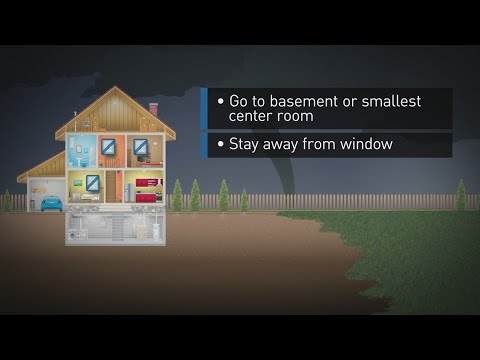
This image is property of i.ytimg.com.
Windows and Tornadoes
Windows are among the most vulnerable parts of a building during a tornado. They can shatter easily, exposing you and your family to the risk of injury from flying glass and debris. Understanding the importance of protecting windows, the risks associated with open windows, and the decision between opening or closing windows can make a significant difference in your safety.
The importance of protecting windows
Windows are susceptible to high winds and can be easily shattered by the powerful forces during a tornado. Therefore, it is important to take measures to protect your windows from potential damage. By safeguarding your windows, you reduce the risk of injury from broken glass and limit the amount of debris that can enter your home. Protecting windows also helps maintain the structural integrity of your house, preventing further damage.
Common risks associated with open windows
While it may seem counterintuitive, opening windows during a tornado can actually increase the risk of injury and property damage. The strong winds can enter through the open windows, causing a significant increase in internal pressure. This pressure can lead to structural damage, such as walls and roofs collapsing. Additionally, open windows allow debris to enter the home, putting you and your family at risk of injury from flying objects.
Choosing between opening or closing windows
In general, it is advisable to keep windows closed during a tornado. Closed windows provide an additional barrier against the strong winds and flying debris. However, there are situations where opening certain windows can be beneficial. It is important to make an informed decision based on the specific circumstances and the available safe shelter options in your home.
Recommended Windows to Open
In some cases, opening windows strategically during a tornado can help alleviate pressure imbalances and reduce the risk of structural damage. Identifying the recommended windows to open can provide a safer environment within your home.
Windows in the shelter location
If your designated safe area does not have windows, this consideration may not apply. However, if your safe area has windows, opening them slightly can help equalize the pressure between the interior and exterior of the shelter location. This can prevent structural damage to your home and potentially protect you from harm.
Windows on the side opposite the tornado’s approach
If you have solid knowledge and awareness of the tornado’s approach, opening windows on the side of your home opposite to the tornado’s path may help mitigate the pressure imbalance. By allowing the wind to flow through your home instead of trying to force its way in, you can minimize the risks associated with high internal pressure.
Windows that can alleviate pressure imbalances
Certain windows that are strategically located can be opened to help alleviate pressure imbalances. These windows should be on the same level and roughly the same size to ensure a balanced flow of wind in and out of your home. Consult with a local tornado expert or meteorologist to determine the best windows to open based on your specific circumstances.
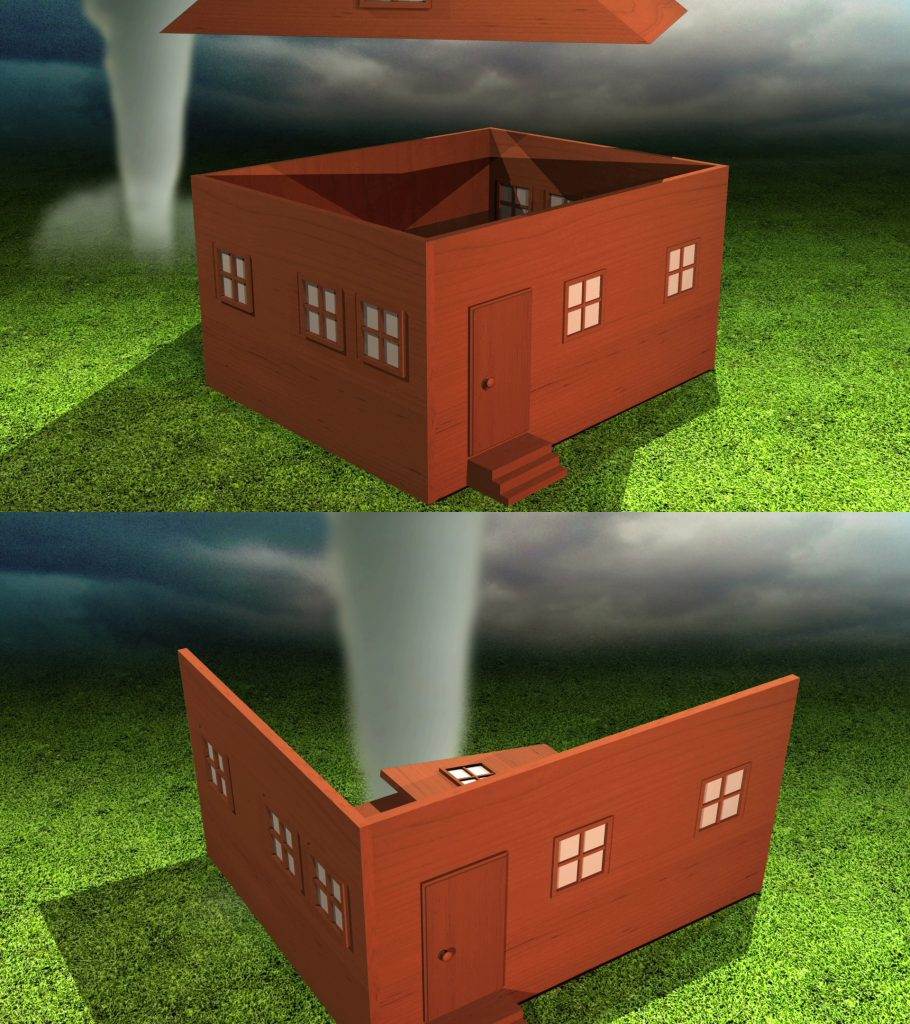
This image is property of www.ksn.com.
Windows to Avoid Opening
While there are situations where opening certain windows may be beneficial, there are windows that should generally be avoided during a tornado. Opening these windows could significantly compromise your safety and the integrity of your sheltered space.
Windows with direct exposure to the tornado
Windows that directly face the approaching tornado should never be opened. These windows are most susceptible to the strongest winds and flying debris. Opening them could lead to catastrophic damage and an increased risk of injury or even fatality. It is crucial to prioritize your safety and keep these windows securely closed and protected.
Windows that could hinder your safe shelter
Windows located in areas that could obstruct your safe shelter should also remain closed during a tornado. For instance, if your designated safe area is a bathroom or closet with limited space, opening windows in that area could impede your ability to take cover or expose you to flying debris. Keep these windows closed to ensure an unobstructed and secure shelter space.
Windows in vulnerable areas prone to debris impact
Windows located near trees, power lines, or other objects that are prone to being damaged or uprooted during a tornado should be kept closed. While flying debris can be hazardous to any window, windows in vulnerable areas face an increased risk of impact. Keeping these windows closed minimizes the chances of debris penetrating your home and endangering your safety.
Securing Windows for Tornadoes
To enhance the protection of your windows and ensure maximum safety during a tornado, reinforcing your windows with storm shutters, installing impact-resistant window film, or using plywood or storm-resistant window covers are effective measures.
Reinforcing windows with storm shutters
Storm shutters are designed to cover and protect windows during severe weather events such as tornadoes. They provide an additional layer of defense against high winds and flying debris. There are various types of storm shutters available, including roll-down shutters, accordion-style shutters, and panel shutters. Choose the type that suits your needs and have them installed or easily accessible for rapid deployment.
Installing impact-resistant window film
Impact-resistant window film is a transparent and adhesive film that can be applied to the interior surface of your windows. When properly installed, this film helps hold shattered glass together, reducing the risk of injury from flying glass shards. While impact-resistant window film does not make your windows unbreakable, it provides added protection against debris and increases the overall safety of your home.
Using plywood or storm-resistant window covers
If storm shutters or window film are not available or feasible options for you, using plywood or storm-resistant window covers is an alternative way to safeguard your windows. Cut plywood panels to fit each window and securely attach them using fasteners. Ensure that the plywood covers the entire window completely, leaving no gaps that could allow debris to enter. Alternatively, consider using specially designed storm-resistant window covers that are easy to install and remove as needed.
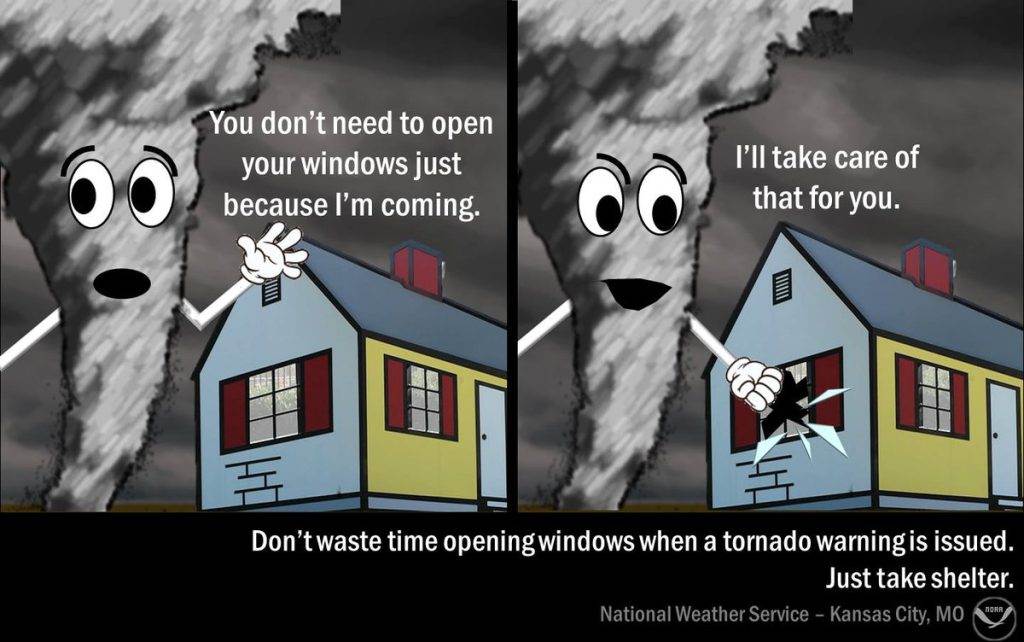
This image is property of pbs.twimg.com.
Protecting Yourself and Your Family
When a tornado is imminent, it is essential to take immediate action to protect yourself and your family. Seeking shelter away from windows, covering yourself with a mattress or sturdy object, and remaining vigilant are crucial steps to ensure your safety.
Seeking shelter away from windows
When a tornado warning is issued, quickly move to your designated safe area away from windows. Seek shelter in a small, windowless room on the lowest level of your home, such as a basement or an interior closet. If your safe area has windows, avoid standing or taking cover near them. The goal is to distance yourself from potential flying debris and reduce the risk of injury.
Covering yourself with a mattress or sturdy object
While taking shelter in a safe area, covering yourself with a mattress, heavy blankets, or even a sturdy object can provide an additional layer of protection. In the event of flying debris or structural damage, these items can help shield you from potential harm. Ensure that you have these items readily available in your safe area, along with your emergency supply kit.
Remaining vigilant and listening for updates
During a tornado, it is essential to stay informed about the situation and listen for updates and instructions from local authorities. Keep a battery-powered radio with spare batteries in your safe area to stay connected to emergency broadcasts. Pay attention to any changes in weather conditions and be prepared to take further action if necessary. Stay in your safe area until it has been declared safe to emerge by local authorities or after receiving confirmation that the tornado has passed.
The Role of Windows in Tornado Damage
During a tornado, windows play a significant role in the extent of damage experienced by a building. Understanding the forces that affect windows, the potential structural damage caused by tornados, and the impact of flying debris can help you better comprehend the importance of proper window protection.
Understanding the forces that affect windows
Tornadoes generate incredibly high wind speeds, and it is these forces that pose a significant risk to windows. The combination of the high wind pressure outside the building and the low pressure inside can impose tremendous stress on windows, causing them to break, shatter, or be sucked out of their frames. The structural integrity of windows plays a vital role in determining their ability to withstand these forces.
Potential structural damage caused by tornadoes
Tornadoes can cause varying degrees of structural damage to buildings, depending on their strength and proximity. High winds can shear off roofs, collapse walls, and cause significant structural deformation. When windows break or fail, the increased wind pressure can exacerbate the structural damage, leading to further destruction. Properly protected windows can help maintain the integrity of a building and prevent secondary damage caused by the wind’s entry.
The impact of flying debris on windows
Flying debris is one of the most significant threats during a tornado. It can cause severe damage not only to windows but also to the entire structure of a building. The high-speed winds can transform ordinary objects into dangerous projectiles, capable of piercing or shattering windows. By protecting your windows, you reduce the risk of flying debris entering your home and minimize the potential for injury to yourself and your family.
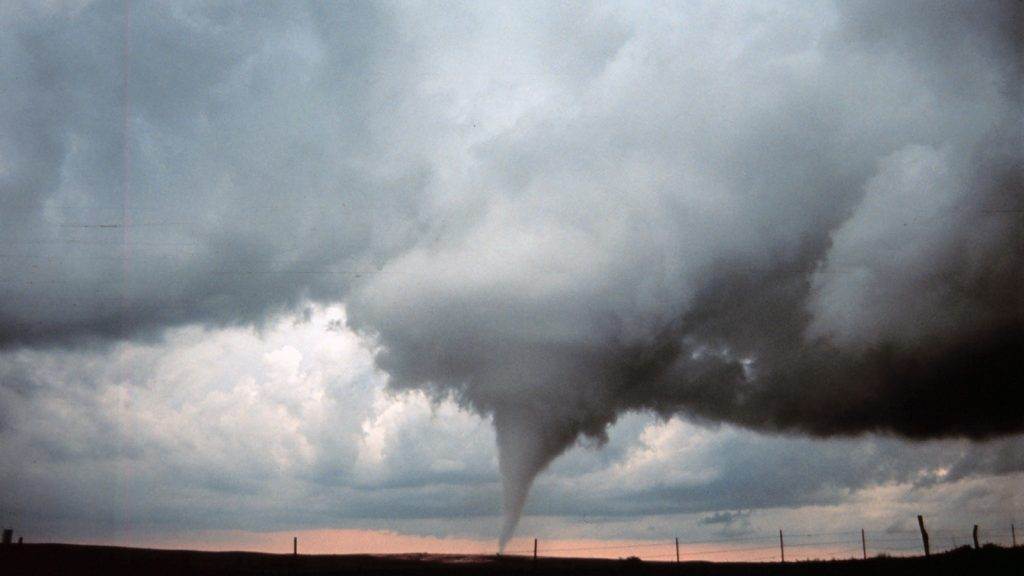
This image is property of cdn.hswstatic.com.
Emergency Procedures After a Tornado
Once a tornado has passed and the immediate danger has subsided, it is important to follow specific emergency procedures to ensure the safety and well-being of everyone in your household and to prevent further harm.
Checking for injuries and administering first aid
After a tornado, check yourself and your family members for any injuries. Attend to any immediate medical needs and administer first aid as necessary. Take caution when moving around your property, as there may be hazards or unstable structures caused by the storm. If anyone is seriously injured, call for emergency medical assistance immediately.
Assessing structural integrity before exiting your safe space
Before leaving your safe space, carefully assess the structural integrity of your home or shelter. Look for signs of damage, such as cracked walls, sagging ceilings, or leaning walls, that may indicate significant structural issues. If you suspect your home may be unsafe, contact local authorities or professional building inspectors to assess the structural stability and determine if it is safe to exit your shelter.
Avoiding downed power lines and potential hazards
After a tornado, be cautious of downed power lines or other potential hazards that may pose a threat to your safety. Exercise extreme caution when clearing debris or moving around your property, and avoid any power lines or electrical equipment that may be damaged or still energized. If you come across downed power lines or suspect a gas leak, stay clear of the area and immediately contact the relevant authorities.
Conclusion
When it comes to tornadoes, preparedness and safety should always be a priority. By understanding the risk, creating an emergency plan, and gathering essential supplies, you can ensure that you and your family are well-equipped to face this powerful natural disaster. Identifying safe shelter locations, protecting your windows, and securing your home further enhance your chances of staying safe during a tornado. Remember to prioritize personal safety, follow the guidance of local authorities, and remain vigilant throughout the entire tornado event. By being prepared and taking necessary precautions, you can minimize the risks associated with tornadoes and protect yourself and your loved ones.
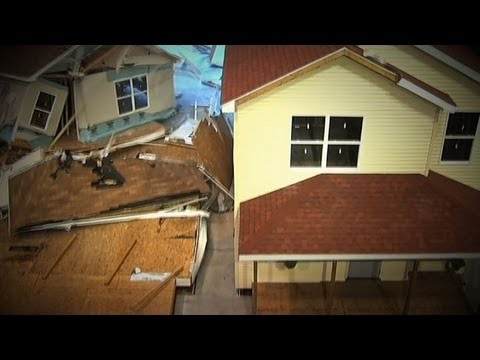
This image is property of i.ytimg.com.
